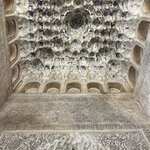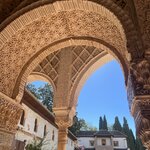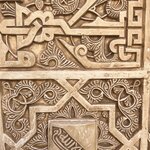Highlights
- Learn how to prepare tapas in a cooking class in Barcelona
- Take a wine tour in Spanish Basque Country
- Discover Madrid's rich history on a private tour of the city
- Tour olive groves and learn the secrets to producing great olive oil
- Visit some of the highlights of Andalusia, like Seville, Ronda, and Málaga
Brief Itinerary
| Day | Highlights | Overnight |
|---|---|---|
| Day 1 | Arrive in Spain, Self-Guided Barcelona Tour | Barcelona |
| Day 2 | Tour Barcelona by Land & Air | Barcelona |
| Day 3 | Private Cooking Class with a Master Chef | Barcelona |
| Day 4 | Transfer to Álava, Zaragoza City Tour & Wine Experience | Elciego |
| Day 5 | Transfer to Bilbao, La Rioja Wine Tour | Bilbao |
| Day 6 | Tour the City of Bilbao | Bilbao |
| Day 7 | Day Trip to San Sebastián, Explore the Basque Coast | Bilbao |
| Day 8 | Transfer to León, Road Trip along the Cantabria Coast | León |
| Day 9 | Transfer to Madrid & Salamanca City Tour | Madrid |
| Day 10 | Discover Madrid's Royal Legacy on a Private City Tour | Madrid |
| Day 11 | Free Day in Madrid, Evening Flamenco Experience | Madrid |
| Day 12 | Day Trip to Toledo, Private City Tour & Gourmet Lunch | Madrid |
| Day 13 | Travel to Seville by Train | Seville |
| Day 14 | Experience Seville on a Private Tour | Seville |
| Day 15 | Visit an Olive Oil Estate | Seville |
| Day 16 | Transfer to Málaga & Wine Tour in Ronda | Málaga |
| Day 17 | Go on a Pilgrimage from Málaga | Málaga |
| Day 18 | Day Trip to Granada, Tour the Alhambra | Málaga |
| Day 19 | Transfer to Córdoba | Córdoba |
| Day 20 | Tour the City of Córdoba | Córdoba |
| Day 21 | Depart Madrid |
Detailed Itinerary
Day 1: Arrive in Spain, Self-Guided Barcelona Tour

Welcome to Spain! Upon arrival at Barcelona's El Prat Airport, meet your private driver and transfer into the city. Take the afternoon to explore on a self-guided tour. First, visit Mt. Montjuïc and the surrounding area. Montjuïc is a famous hill that overlooks the Port of Barcelona. Take the Montjuïc Cable Car from the metro station near Olympic Park, which takes you up to the 17th-century Castle Montjuïc and offers panoramic views of the city. You can also access Montjuïc via cable car from Barceloneta Beach, and by funicular elevator adjacent to the cable car.
The Poble Espanyol is also fun to visit. Constructed in 1929, this open-air museum features over 100 recreated buildings in the style of traditional Spanish villages. When the sun goes down over the city, make sure you're near the Magic Fountain of Montjuïc, named for the dazzling display of water and colored lights that occur after dark. It's the best free show in the city, one whose effect is heightened by the hundreds of spectators and a communal atmosphere.
Day 2: Tour Barcelona by Land & Air

After breakfast, meet your local guide who will whisk you away in a chauffeured vehicle for a half-day tour. First, visit Park Güell. Located atop Carmel Hill in north Barcelona, this UNESCO World Heritage Site is a fine example of Gaudí's boundary-pushing modernist style. Next up is the Sagrada Família, the iconic Roman Catholic basilica that's an impressive mix of gothic, Catalan-modernism, and Art Nouveau architectural styles. Despite construction on the church beginning in 1882, it's still technically listed as being under construction and was only consecrated in 2010.
Then, head to the famous boulevard Passeig de Gràcia, home to upscale boutiques as well as two residential buildings by Gaudí: the Casa Mila apartment building, nicknamed "La Pedrera" because its façade resembles a stone quarry; and Casa Batlló, christened Casa dels Ossos, or "House of Bones," due to the skeletal nature of its design. After touring Barcelona's streets, take to the skies on a short helicopter tour. This excursion lasts a brisk 10 minutes, during which you'll be able to look down on every major landmark in the city, as well as the impressive coastline.
Day 3: Private Cooking Class with a Master Chef

Today in Barcelona, food takes center stage as you participate in an exclusive cooking class of traditional Spanish cuisine. This gastronomic workshop begins with a visit to a local market with your private teacher/master chef. With fresh produce in hand, head to a private kitchen in downtown Barcelona and prepare your very own Spanish tapas from scratch under the tutelage of your chef. A fitting end to this experience is when you get to sit down and enjoy your delicious creations.
After the cooking class, take a few hours to enjoy the city. If shopping is on your radar, visit the boutiques around the Passeig de Gràcia. And if the cooking class piqued your appetite, you can find many options for dinner complete with great local wine on Carrer De Blai in central Barcelona. It is known as the "tapas route," as it features an abundance of spectacular tapas bars.
Day 4: Transfer to Álava, Zaragoza City Tour & Wine Experience

After breakfast, meet your private driver for a transfer to the Álava region, in northeastern Spain's Basque Country, stopping en route in historic Zaragoza. Located in northeastern Spain's Aragon region, Zaragoza is replete with well-preserved Mudéjar landmarks and Roman Catholic basilicas, which you'll visit on a walking tour with your guide. You'll also stroll the Ebro River waterfront and visit the 18th century Catedral-Basílica de Nuestra Señora del Pilar and 11th-century Aljafería Palace. Then, stop to fuel up with such rustic cuisine as roast lamb, artisanal cheeses, cured meats, suckling pig, and wild game.
Hop back in the car for the final two-hour drive from Zaragoza to Álava. Your destination is a winery hotel designed by the legendary architect Frank Gehry. After checking in, enjoy a tour of the facilities and learn about the winery's long and storied history. Afterward, have a gourmet dinner paired with great local wines, before retiring to your room for the evening.
Day 5: Transfer to Bilbao, La Rioja Wine Tour
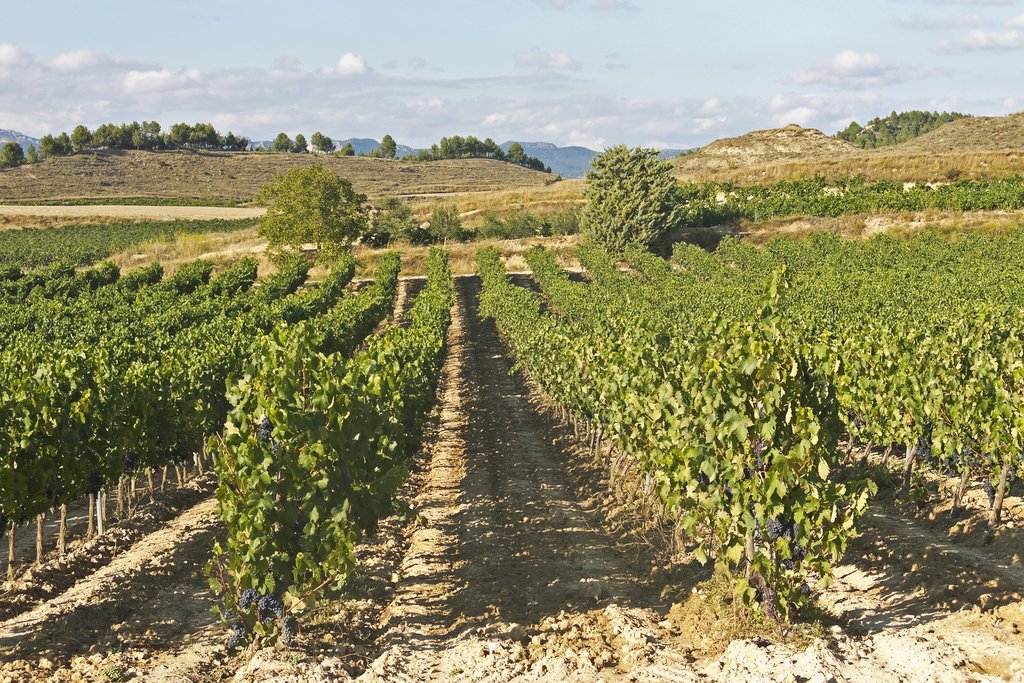
In the morning, head to the port city of Bilbao. On the way to the coast, stop in La Rioja, perhaps the most famous wine region in Spain. La Rioja is a postcard of a province, with rolling green hills, alpine mountains, limestone peaks, medieval villages, and endless vineyards. There's a sweet spot here called Rioja Alavesa, which is located between La Rioja and Basque Country. Here, stop at a local winery to enjoy a tour with a professional guide.
Begin your tour with a visit to an authentic 15th-century winepress designed for barefoot grape pressing. Glean insight into the history of La Rioja, and how it was settled in the 19th century by frustrated French winemakers after an infestation of parasites ruined their vineyards back home. Throughout the experience, taste centennial wines as you make the acquaintance of professional vintners and specialists. Conclude the tour with a traditional lunch in a medieval Spanish town, accompanied by your guide. Afterward, hop back in the car for the remaining hour-long drive to Bilbao.
Day 6: Tour the City of Bilbao

Take the day to discover Bilbao, accompanied by an expert travel guide who can lead the way according to your tastes and interests. Begin in the beating heart of Bilbao, the Old Town, home to the city's oldest landmarks as well as many bars, restaurants, and boutiques. Major sights include the 18th-century Church of San Nicolás and the 16th-century Church of San Antón, which is dedicated to Anthony the Great, an Egyptian saint and father of monasticism. Other notable sights include the 14th-century Cathedral of Santiago and the Mercado de la Ribera, which is the largest covered marketplace in Europe.
Of course, no visit to Bilbao is complete without stopping in at the Guggenheim Museum, a masterpiece of contemporary architecture by the legendary Frank Gehry. This glimmering titanium structure looks more like a sculpture than a building, with its sleek lines sensually curving in seeming defiance of physics. Inside, the museum's 78,740 square-foot (24,000 m²) space houses a treasure trove of works from great artists such as Andy Warhol, Anish Kapoor, Jeff Koons, Louise Bourgeois, and Eduardo Chillida.
Day 7: Day Trip to San Sebastián, Explore the Basque Coast

After breakfast, meet your driver for a day of exploring the Basque coast. Head east to the city of San Sebastián, but on the way, stop in San Juan de Gaztelugatxe. This island, located offshore in the Bay of Biscay, is connected to the mainland via a stone bridge. Atop it is an old church that, in one form or another, dates back to the ninth century. Game of Thrones fans will recognize Gaztelugatxe as the setting of the Dragonstone castle in season seven. After admiring the scenery, hop back in the car for the short drive to San Sebastián.
Here, wander the streets of the Parte Vieja (old quarter) and stroll La Concha Promenade, which curves around the city's main beaches, Ondarreta and La Concha. For great views looking back at San Sebastián, take a ferry to the offshore island of Santa Clara, or ride the funicular railway up to Mont Igueldo, which offers sweeping panoramas. No tour is complete without indulging in its celebrated food culture: San Sebastián specializes in tapas called pintxos (pronounced "peenchos"). Most bars, cafés, and restaurants in the Parte Vieja serve some version of these bite-sized delicacies, best paired with local wines.
Chat with a local specialist who can help organize your trip.
Day 8: Transfer to León, Road Trip along the Cantabria Coast

Push west from Bilbao on a road trip to one of the most beautiful parts of the country: the Cantabria coast. Your driver will do all the work as you ride along on a scenic route known for its wide beaches and coastal cliffs. After passing through Cantabria, you'll reach the adjacent region of Asturias. Stop for lunch in Cantabria's capital city of Santander, Asturias' capital of Gijón, or in one of the many charming villages dotting the coast. Expect cuisine here to be rustic and delicious, featuring plenty of fresh seafood.
After a leisurely lunch, point the car south and head to the city of León. Upon arrival, you should have enough time left in the day to visit León's cathedral, a gothic landmark that was built in the 13th century over the ruins of Roman baths. It's an enormous place that takes up 5,906 square feet (1,800 m²), and features impressive stained glass mosaics dating from the 13th through 16th centuries. Later, visit Barrio Húmedo, which is close to the main square and features a nice mix of cafés and eateries.
Day 9: Transfer to Madrid & Salamanca City Tour

Head south to the nation's capital of Madrid, but not before stopping off at a gem of a city that's a bit off the tourist trail: Salamanca. Salamanca brims with golden sandstone architecture overlaid with ochre-tinted Latin inscriptions, plus more Gothic and Baroque plazas and palaces than you can shake a stick at. One highlight is the Plaza Mayor, which is gorgeous after dark when the lights go on. Despite dating back to Celtic times, the spirit of the city is modern and youthful due to the large student population enrolled in the Universidad de Salamanca.
Tour the city with a private guide, stopping for intermittent breaks in Salamanca's cafés for refreshment. After experiencing the culture and history of the place, hop back in the car for the 2.5-hour drive to Madrid. Upon arrival, check into your hotel to relax and recharge after your full day.
Day 10: Discover Madrid's Royal Legacy on a Private City Tour

Enjoy a half-day tour of Madrid led by an expert local guide, including the Madrid de los Austrias area built in the 16th century and home to one of the grandest plazas in Spain, the Plaza Mayor—heart of old Madrid. Also here is the Royal Palace, which was the official home of the Spanish monarchs until 1931. Tour both the grounds and interior of this 3,418-room monument to opulence. Enter the parade ground, the bed chambers of Charles III, several salons, the Royal Chapel, and the Hall of the Crown, which displays Charles I's crown, scepter, and throne.
Later, visit El Retiro Park. This 308-acre expanse of verdure is the green lung of Madrid, abounding with sculptures, fountains, and a man-made lake perfect for taking a boat trip. There are also a few must-visit gardens here, including the Jardín de Vivaces ("Garden of Vivacious Plants"), Jardines de Cecilio Rodríguez (inspired by the Andalusia region), and a sprawling rose garden with 4,000 roses that bloom from May to June.
Day 11: Free Day in Madrid, Evening Flamenco Experience

Spend the morning relaxing at your hotel, or get out and explore the city on foot. If you're a sports fan, opt for a treat in the form of a tour of the Estadio Santiago Bernabéu, the 81,000-seat stadium home to the Real Madrid football club. You might also consider taking a stroll along Fuencarral Street, which runs through downtown and is a popular shopping area full of upscale brands and designer boutiques. In the evening, use this opportunity to experience and appreciate one of Spain's premier cultural offerings: flamenco.
First, take a private tour of a guitar workshop where local artisans craft traditional instruments before visiting a dance academy that teaches the future stars of flamenco. Then, visit a shoemaker who labors to produce the unique footwear for these dancers. Finally, sit down for a sultry show as professional dancers move about the tablao (dancefloor). After the show, head to Calle Ponzano for dinner. Located in the north of the city, this bohemian enclave is the perfect area to enjoy some late-night tapas, followed by a bit of bar-hopping.
Day 12: Day Trip to Toledo, Private City Tour & Gourmet Lunch
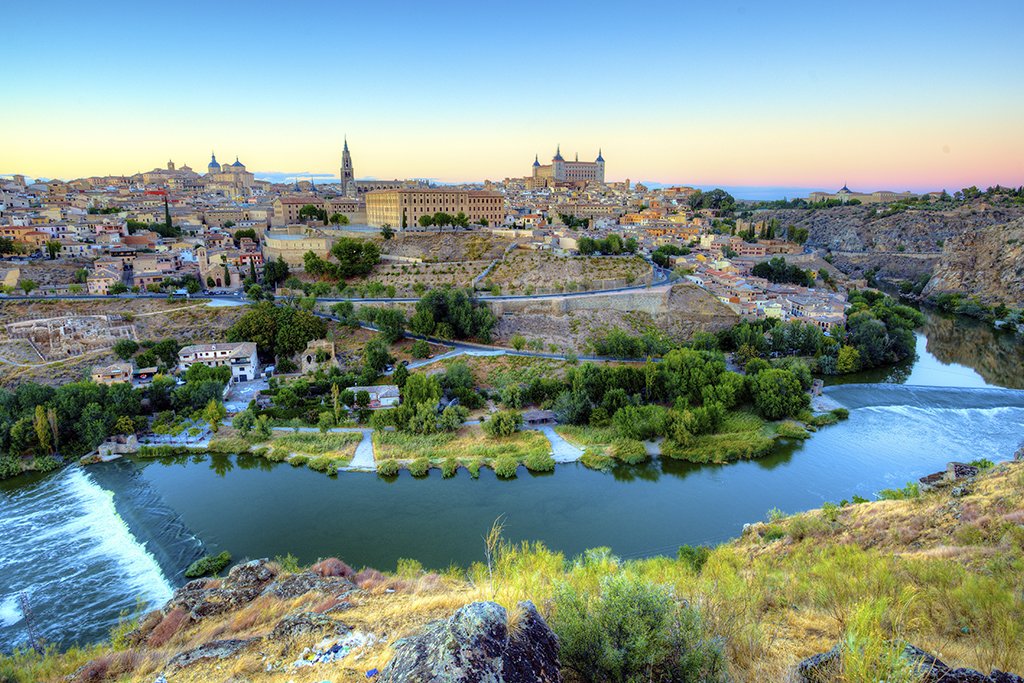
This morning journey south to Toledo, boasting a dramatic location atop a gorge overlooking the Río Tajo. This historic city was the capital of Spain in the 16th century and was known as the "city of the three cultures," a place where—legend has it—Christian, Muslim, and Jewish communities peacefully coexisted. You can see remnants of this in the old Arab, Muslim, and Christian monuments that still stand. These include the 15th-century Monastery of San Juan de los Reyes, the Alcázar de Toledo (a former Roman palace), and the 12th-century Moorish Synagogue of Santa María la Blanca.
Accompanied by an expert guide, visit these historic landmarks as well as the 13th-century Toledo Cathedral and 12th-century Church of Santo Tomé. Then, head to the outskirts of the city, where the pastoral landscape is dotted with manor estates known as cigarrales: against this scenic backdrop, enjoy a gourmet lunch on the banks of the Tagus River with views over Toledo. After lunch, visit another cigarrale that serves as a marzipan confectionery and where you'll learn the history of traditional Toledan marzipan hand-on. Needless to say, the workshop ends with you indulging in your sweet creations.
Day 13: Travel to Seville by Train

After breakfast in Madrid, meet your driver for a transfer to Atocha Train Station, where you'll board a high-speed train to Seville. The journey is a pleasant three hours, during which you can relax in your reclining seat and watch Spain's beautiful landscapes pass by through the window. Upon arrival in Seville, meet your private driver and head to your hotel for check-in. After settling in, head out to explore the capital of Spain's Andalusia region, perhaps beginning with the neomudéjar Plaza de España, built in 1928 and surrounded by a beautiful park rich in flora and fauna.
Next, head to the old quarter and Plaza de la Encarnación to visit an impressive modern landmark. Here, you'll find Metropol Parasol, a massive wooden structure designed by German architect Jürgen Mayer, which opened in 2011. Known locally as Las Setas (the mushrooms), this icon of Seville is indeed fungi-like and capped with a curved honeycomb roof. Take an elevator to the top, where you'll be treated to stunning views of the city. Finish off your day in Seville by enjoying a sundowner at one of the city's famous tapas bars.
Day 14: Experience Seville on a Private Tour

After breakfast, head off with a local guide to visit the Seville Cathedral, a 15th-century Roman Catholic church that's home to the tomb of Christopher Columbus. It's a UNESCO World Heritage Site, the largest gothic church in the world, and an awe-inspiring testament to pious grandiosity. You'll also see La Giralda, the cathedral's looming belltower. There's a noticeable stylistic difference between the two structures, as this 12th-century pillar was originally built as a minaret for the city's Great Mosque, back when Andalusia was ruled by the Moors.
Then, travel back to the era of the Christian conquest when you visit the 14th-century Alcázar of Seville royal palace, a marvel of Mudéjar architecture built over the site of a former Muslim fortress. Then walk over to the fashionable Santa Cruz neighborhood (historically the Jewish quarter of the city) to enjoy some small plates washed down with local wine at one of its many tapas bars. You can also visit crafts markets and local shops, where artisans produce intricate silverwork and elegant garment embroidery. After completing the half-day tour, return to your hotel to relax, or continue to explore the town.
Day 15: Visit an Olive Oil Estate

One of Spain's most popular exports is its high-quality olive oil. Witness the production process firsthand on an exclusive tour of an Andalusian olive oil estate. Upon arrival, enjoy a typical Andalusian breakfast of coffee, hot chocolate, churros, and toast with olive oil and tomatoes. Afterward, tour the old manufacturing center and view the 16th-century olive-oil presses. Visit the estate's working presses, which use modern methods to produce the olive oil they export today; the estate excellent biggest olive-oil museums, with exhibits detailing 150 varieties of olives from 13 countries.
Then, relax on the estate’s patios and enjoy some leisure time, while taking in the beautiful Andalusian scenery. The excursion ends with a tasting of olive oils produced on the estate, allowing you to put your newfound knowledge of this delicious ingredient to good use. After returning to Seville, spend the remainder of the day however you see fit. Stroll the Plaza de América at María Luisa Park, walk around the historic neighborhood of Triana, or pick a restaurant for dinner followed by a flamenco show.
Day 16: Transfer to Málaga & Wine Tour in Ronda

In the morning, meet your driver for a journey to Málaga, a Mediterranean port city with an enviable location on Spain's Costa del Sol, famous for its abundance of golden beaches. En route, you'll stop in the ancient city of Ronda, situated over a deep gorge. Discover Ronda's wine culture by visiting a winery in a former convent, and where the owner will take you on a guided tour of the stunning grounds full of hanging vines, fruit trees, and well-manicured gardens. Then sit down for a lunch cooked specially by the owner himself. Naturally, this includes a tasting of the various wines produced on-site.
After leaving Ronda, stop at some of the famous white villages nestled in the Sierra de Grazalema Mountains. One of the most beautiful is Zahara de la Sierra. Sitting atop a mountain, this village was a Moorish outpost until the early 15th century. You can see remnants of this in the form of the iconic castle perched atop the rocky mountain just above the town. Continue on to Málaga, where you'll check into your hotel and unwind for the evening.
Day 17: Go on a Pilgrimage from Málaga

Today, enjoy a unique and quintessentially Spanish cultural activity known as romería. This long-standing tradition involves a procession of pilgrims walking from the city to a religious sanctuary in the countryside. Those on the route dress in costumes, ride horses, and carry flags, all accompanied by live music and fireworks. There's no shortage of food stalls, bars, and drink vendors, too. It's an organized experience, but don't worry about getting lost—just follow the crowd of merrymakers, horses, and parade floats, and they'll lead the way.
After the party, have a break for a picnic lunch. Then head back to Málaga, where you'll have the rest of the day free to explore. You can visit the hilltop Gibralfaro Castle, which dates to the 10th century or stroll around the Port of Málaga. For culture, visit the Picasso Museum, the Carmen Thyssen Museum (which features Andalusian paintings from the 19th century), or the Centre Pompidou Málaga, a contemporary art museum housing works in a glass cube.
Day 18: Day Trip to Granada, Tour the Alhambra

In the morning, a driver will meet you for a two-hour drive northeast and into the Sierra Nevada Mountains to Granada. This is another historic city that was once the last bastion of Al-Andalus (Muslim Spain), when it was ruled by the Moors. You can see examples of this history in the form of Granada's most famous landmark, the Alhambra, which receives more than two million visitors annually.
This imposing Muslim fortress was built atop a hill overlooking Granada and dates to the ninth century. It was rebuilt in the 14th century by the Nasrid Dynasty and served as a Moorish palace until 1492 when, after the Christian reconquest, it became the Royal Court of Ferdinand and Isabella. It's now a UNESCO World Heritage Site. On a tour, you'll walk through its grand halls and stroll the Generalife Gardens, which are filled with colorful flowers and fountains and offer panoramic views of the city down below.
Day 19: Transfer to Córdoba

Leave Málaga in the morning by private transfer and head north to Córdoba, yet another jewel in the crown of the Andalusia region. Stop halfway to visit El Torcal de Antequera. This nature reserve is known for its otherworldly rock formations, comprised of limestone that is hundreds of millions of years old, sculpted by the elements over time.
Upon arrival in Córdoba, check into your hotel to unwind, and spend the remainder of the day however you see fit. If you'd like to go out and explore, take a quick stroll along the narrow streets of Córdoba's historic Jewish Quarter. Or, head to the western outskirts of the city and visit the ruins of the Medina Azahara, a Moorish palace-city built in the 10th century. One of the best strolls anywhere in the city is along the Roman Bridge of Córdoba, which dates to the first century BCE. Be sure to do this at sunset.
Day 20: Tour the City of Córdoba

In the morning, meet your private guide for a walking tour around Córdoba's historic core, visiting the breathtaking Mezquita (Mosque-Cathedral of Córdoba) and the Alcázar de los Reyes, a palace built in the 14th century. This is where Christopher Columbus met with the Catholic monarchs and was granted approval for his voyage west in search of the Indies. The terraced gardens, fish ponds, flower beds, and orange trees here make for great photo opportunities. You'll also have the option to meander around the winding and narrow streets of the historic Jewish Quarter.
At the end of the tour, your guide will say farewell and leave you in a popular local restaurant for a typical Córdoban lunch. Take the afternoon to explore the city at your leisure. In the evening, meet up with your guide again for a gastronomic experience as you visit markets and bars, pairing Spanish tapas with the perfect local wines.
Day 21: Depart Madrid

After a leisurely breakfast, make the 4.5-hour transfer back to Madrid and Barajas Airport. Here you will catch your return flight home. Adios!
More Great Spain Itineraries
Looking for more inspiration for your trip to Spain? Check out these other Spain itineraries, explore different ways to spend three weeks in Spain, or learn about the best time of year to visit Spain.



